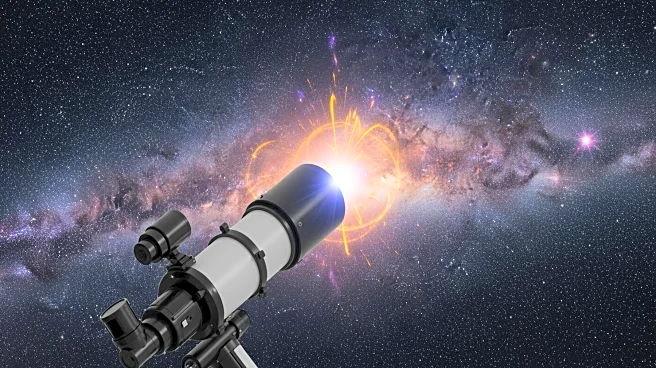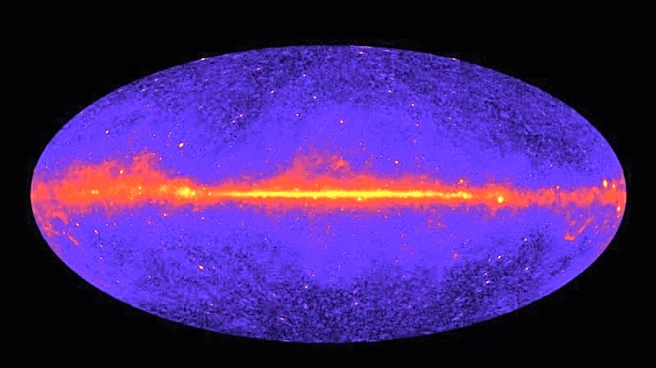What's Happening?
Scientists at Johns Hopkins University have been investigating a mysterious glow of gamma rays near the center of the Milky Way, which could potentially be linked to dark matter. This glow has puzzled
astronomers for years, with two main theories proposed: it could be the result of dark matter particle collisions or from rapidly spinning neutron stars known as millisecond pulsars. A recent study published in Physical Review Letters suggests that both explanations are equally plausible. The research team used advanced supercomputer models to map potential dark matter locations in the Milky Way, incorporating the galaxy's early history and evolution. These models closely matched real gamma-ray observations made by NASA's Fermi Gamma-ray Space Telescope, suggesting that the excess gamma rays could originate from dark matter.
Why It's Important?
The potential discovery of dark matter would have significant implications for our understanding of the universe. Dark matter is believed to dominate the universe and hold galaxies together, yet it remains undetected directly. Confirming its existence would be a major breakthrough in astrophysics, potentially leading to new insights into the structure and evolution of galaxies. The research could also impact future studies and technologies aimed at detecting dark matter, influencing both scientific and technological advancements. If the gamma rays are indeed from dark matter, it would provide a concrete clue to its existence, impacting theories and models in cosmology.
What's Next?
The research team plans to conduct further experiments to test the energy levels of the gamma rays from the Milky Way. They aim to determine whether these rays are from millisecond pulsars or dark matter collisions. The construction of the Cherenkov Telescope Array, a new gamma ray telescope, is expected to provide higher-resolution data that could help resolve the mystery. Researchers will also work on mapping predictions of dark matter locations in dwarf galaxies surrounding the Milky Way, comparing these predictions to new data. The outcome of these studies could confirm one theory over the other or present new challenges in understanding the gamma ray glow.
Beyond the Headlines
The investigation into the gamma ray glow touches on broader questions about the universe's composition and the forces that govern it. The ethical and philosophical implications of potentially discovering dark matter could lead to discussions about humanity's place in the universe and the limits of scientific knowledge. Additionally, the research highlights the importance of international collaboration in scientific endeavors, as the study involves scientists from various institutions working together to solve complex astrophysical puzzles.












